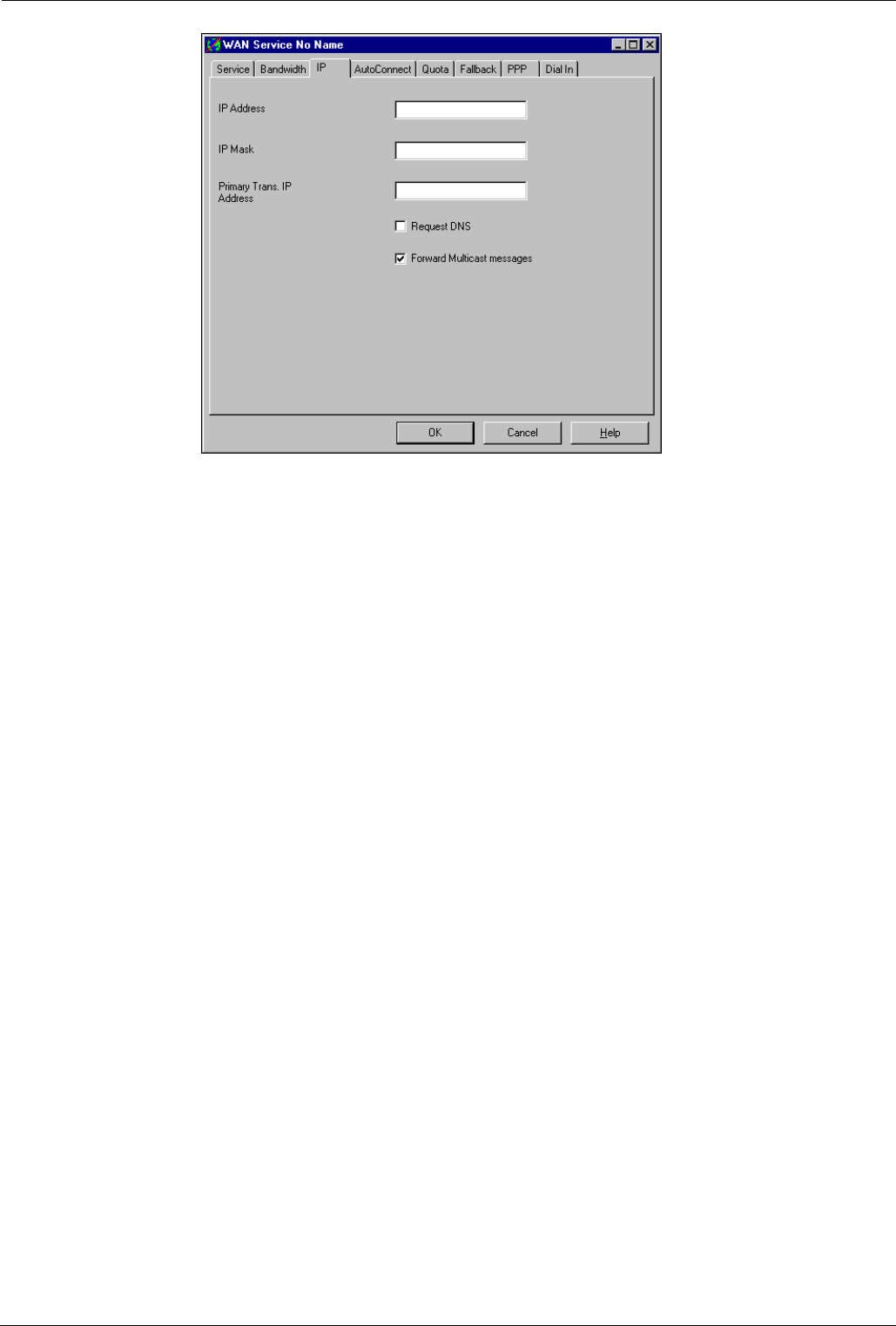
Page 50 - Service Configuration The Configuration Tree Functions
The IP Tab
IP Address: This is the local device’s (IPNC's interface) IP address. Leaving the
field blank or entering 0.0.0.0 means that the local device (the client) is assigned
a dynamic address by the remote end (the server). Normally ISPs provide you
with an IP address upon connection and therefore the field should be left blank
for Internet services. The field can also be left blank if there is an associated IP
route.
IP Mask: Set this to 255.255.255.255 to force Network Address Translation (see
page 129). Leave it blank to enable NAT when the remote end allocates the IP
Address. Any other value disables NAT. The translation is between the IP
address assigned by the remote system and the local address specified in the
System tab.
Primary IP Translation Address: Only applicable when running NAT. This is the
address which unsolicited received data packets will be directed to. It may be, for
example, the address of the local email or Web server.
Request DNS: By ticking this option, DNS information is automatically obtained
from the remote end, usually your ISP. (The DNS Server IP Address field in the
System DHCP tab must be blank.)
Forward multicast messages: At default this option is on. Multicasting allows
bandwidth to be maximised through the reduction of traffic that needs to be
passed between sites.
Page 50 - The Configuration Tree Functions INDeX IPNC Cassette Administration Manual
Service Configuration 38DHB0002UKDD – Issue 7 (22/11/02)


















